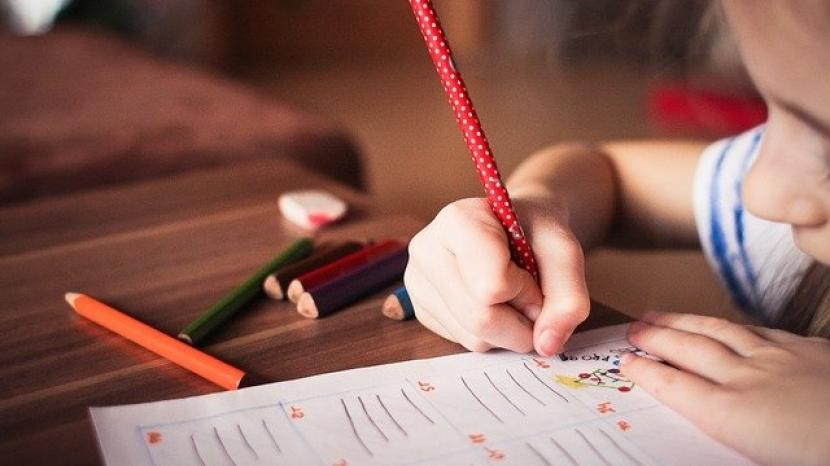
Informing schools and colleges
Help those around your child understand more about concussion and signs to look out for after a bump to the head.

Information and resources on returning to school and activity after a bump to the head.
After a child’s head injury, the parent or carer is usually supplied with information from the GP or hospital doctor. This may include a checklist of the appropriate actions to take, information and guidance (see The first few days after an injury).
Information you receive may include the guidelines below, which aim to help brain recovery as much as possible following a head injury. These cover:
The GP or hospital doctor may also share advice with you on concussion. It is common for children and young people to experience symptoms of concussion for a few days or weeks following a head injury.
Further advice includes The first few days and weeks after a bump to the head, with 5 actions for parents and carers to help the recovery process and NHS guidance on concussion.
Experts have developed recommendations for the return to school and activity to help brain recovery following a head injury.
The following guides are based on these recommendations and can be used when a child’s GP or doctor is happy that they can gradually return to school, activity and sports without worsening symptoms. Children or young people should continue to be monitored carefully.
A period of immediate rest is important after a concussion. However, prolonged absence from school or activities is not recommended.
It is important that everyone involved understands the process – including parents, teachers and the child or young person.
We recommend that you inform your child’s nursery/school/college that your child has sustained a head injury and provide them with a copy of the guidelines. We also advise that you work with your school or college to put the recommendations in place.
Timelines and activities may vary depending on the recommendation of your GP or health professional.
If your child attends a sports club, it is also important to inform them of the head injury and provide them with a copy of the returning to activity guidelines.
Download UK concussion guidelines for non-elite (grassroots) sport
When I went back to school, everything on the blackboard seemed blurry. And I couldn’t read anything as my headache would start. So after that, I stayed at home for a few days to get better.
There should be a minimum of 24 hours between each step.
Step 1

Rest at home for 24-48 hours. Avoid school work and reading and minimise screen time (mobiles, TV, gaming, computers). Try gentle activities such as talking, playing board games or listening to music. Do not carry out any sports or activities, for example ride bikes or scooters.
Step 2

For at least 24 hours, after the initial rest period, gently introduce activities such as reading, TV, school work and short visits from friends or family. Activities should last a maximum of 30 minutes.
Avoid computers and computer games, and no sport or physical play.
A short walk to the shops is a good opportunity to gradually increase physical activity at this stage.
If symptoms return, go back to step 1.
Step 3

Try attending two lessons in school, but do not go to PE lessons or carry out any physical activity, including at breaktimes. You can try walking and socialising but avoid assemblies or busy areas. Do not carry out any homework, assessments or exams at this stage.
If symptoms return, go back to step 2.
Step 4

Gradually increase time at school to half day or 4 hours. You could start attending assembly and other busier areas. The classroom should be adapted to suit needs, and where required allow for extra time, quiet space or longer breaks.
Keep homework to a maximum of 30 minutes and avoid exams and assessments. Do not carry out out any PE lessons, sport or physical activity, even at breaktimes.
Step 5

Try to take part in full days at school and gradually decrease adaptations made so as to return to normal learning. Exams and assessments can be reintroduced. At this stage it is still recommended to not take part in PE lessons, sport or physical activity, even at breaktimes.
Step 6

Keep monitoring for changes in cognition, behaviour, emotions and fatigue.
Once the return to sport guidelines is completed, allow participation in PE lessons or sport activities.
Read the UK Concussion guidelines for returning to sports (pages 17 - 19)
For full details of these steps please refer to The National Acquired Brain Injury in Learning and Education Syndicate's (N-ABLES) Concussion: Return to School Guidance.
If activity brings on or worsens symptoms, go back to the previous stage until symptom-free for 24 hours. If new symptoms occur, or if symptoms are persistent beyond two weeks, seek advice from a GP.
Medical help should be sought immediately through A&E if there are any 'red flags' or symptoms worsen, such as neck pain, repeated vomiting, increased confusion, seizures, and weakness or tingling in arms or legs. These may be signs of a more serious injury.
It’s important that teachers, parents and anyone who cares for your child know about any recent bumps or accidents so that they can look out for warning signs in the following days – see our section on Informing schools and colleges for more information.
The following guidelines have been produced by the Government and the Sport and Recreation Alliance to improve the understanding and awareness of the prevention and treatment of concussion in non-elite (grassroots) sports.
No-one should return to sport within 24 hours of a suspected concussion. Players, parents, coaches, teachers and administrators need to be aware of the steps to:
Anyone with a suspected concussion should be immediately removed from play, and should not return to an activity until a Healthcare professional has excluded concussion or a child or young person has completed the following guided steps for returning to sport.
Note: contact sport refers to a sport where players come into bodily contact with each other, for example rugby and some martial arts.
Step 1

For 24-48 hours after a suspected concussion, you should rest and minimise any activity to a 10-15 minute windows. You may walk, read and try gentle daily activities as long as these activities do not more than mildly increase symptoms. Keep the use of screens (for example, mobile phones, and computers) to a minimum during this period.
Step 2

Start to gently increase light physical activity such as simple chores, moving around the house and short walks. Ensure rest if symptoms increase.
Step 3

Start to increase light aerobic exercise to 10-15 minutes. activities can include walking or stationary cycling. Do not partake in games or sport that might lead to a blow to the head, such as football. The duration and intensity can be gradually increased according to tolerance. Rest is symptoms mildly increase or new symptoms appear.
Step 4

Once symptom free whilst resting, start introducing training activities again in your chosen sport. It is important to avoid any training activities involving head impacts or where there is a risk of head injury.
Step 5

If free of symptoms for 14 consecutive days since the concussion, and if agreed by the child’s GP or doctor, consider returning to full training activities.
Step 6

You can try a full return to competitive sport, if whilst carrying out 'Step 5' you have been symptom free for 14 days during rest periods and throughout pre-competition training. Note a return to full training must take place at least 21 days after the suspected concussion incident.
For full details of these steps please refer to the Government and Sport Recreation Alliance's UK Concussion guidelines for non-elite (grassroots) sport.
Approximately two-thirds of individuals will be able to return to full sport by 28 days but children, adolescents and young adults may take longer.
If symptoms last for more than 28 days, do not participate in any sport and seek medical advice from a GP.
If your child has a head injury we recommend seeking medical advice as soon as possible after the injury (call 111, your GP or in an emergency 999).

Help those around your child understand more about concussion and signs to look out for after a bump to the head.

Most head injuries are not serious but bumps do happen. Find your way around our information - we share the signs to look out for, and steps to take, in case your child has had a concussion.

Looking for further advice and support? If your child’s symptoms persist longer than six weeks and you would like support from one of our specialists, contact our virtual ABI team.